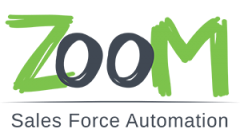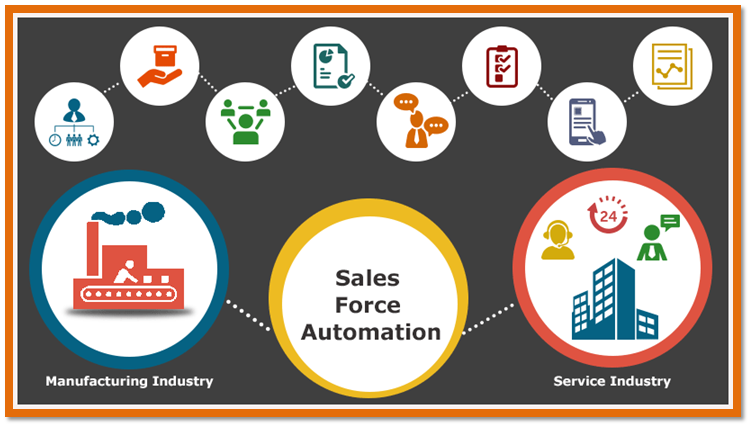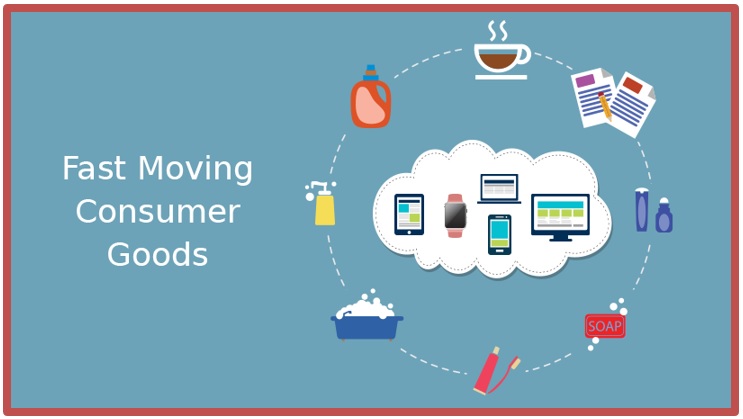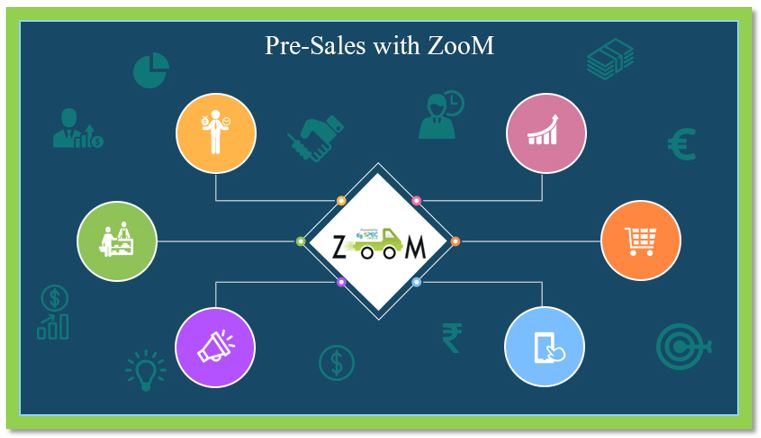The global sales force automation software market was valued at $3,872 million in 2016 and is estimated to reach $7,773 million by 2023, growing at a CAGR of 10.6% from 2017 to 2023
Source: alliedmarketresearch.com
Industry segments worldwide are getting more aggressive and dynamic than before. Newer technological advancements are being adapted to manage and maintain organizational salesforce and associated business activities. It is now indispensable to operate the business without effective sales force automation software. Digital transformation in fleet management is exponentially growing and a variety of domains are enjoying the benefits of this innovative software.
Thanks to mobile sales force automation solutions that offer multiple benefits like easy access to client information, enhanced customer satisfaction, review of sales progress and history, track sales leads/service requests/sales/order status, contact management, sales activity tracking, sales projections, reports, and dashboards, etc.
Before an organization implements a competitive sales automation software solution and while doing so, some challenges that are bound to be encountered, have a look at the major ones and how best can they be overcome.

Sales Force Automation Challenges And Tips To Resolve
- The Dearth of Organizational Vision
- Absence of User Involvement and Interest
- Support and Acceptance by Management
- Seamless Integration of SFA with Other Systems
- Cluttered and Unstructured Data
- Poorly Planned Implementation Schedules
- Effective Training and Orientation of End Users
- Thorough Understanding of Existing Processes and System Requirements
- Post Implementation Monitoring Procedures
- Data Migration, Integration and Maintenance
Dearth Of Organizational Vision:
Not having a well-defined and clear business vision is one big challenge. If there is an absence of a ‘why’, it is tough to implement the SFA solution with ease and accuracy. If organizations are not clear about their own goal, it is tough for them to convince themselves about why to go in for this solution and that can cause a big issue while implementation.
In such cases, businesses must first identify their objectives for the long term and then try to map the SFA requirement to their goals. Once the vision is defined, only then the stepping stone of implementing the solution must be taken. The clarity of why this salesforce solution is important for them is a must.
Absence Of User Involvement And Interest:
How fruitful would a field force solution be if the end-users are not involved or interested! It is finally for them that this system is being launched. But the crux lies in convincing them that it is for their betterment, that this solution is being implemented. Having the SFA solution in place can open processes and make things transparent. This is what users may not like. Their original way of working no longer may be accepted and they may have to alter their workflows according to the system. They would feel that they are being closely monitored all the while and that feeling is not well accepted by many.
The solution lies in training and informing the users right in the beginning about the various advantages that the solution will bring along. They should also be clearly informed about the workflow changes that will take place and that the intention of the solution is not to disclose the user’s moves but to manage and monitor effectively. An increase in productivity and profitability is the key motto, end users must understand. The better the user involvement, the more effective will be the implementation.
Support And Acceptance By Management:
For any sales force automation platform to get fully accepted by the end-users, it is important that it is embraced with open arms, by their management. This creates quite a big hurdle, in case the organization’s top management isn’t in favor of implementing this solution. Their support and acceptance pose a challenge since the field force would be most motivated if they get trained under the assertiveness of the management personnel. For the management to accept something completely new and different from their current workflow is a tad difficult. This is what is a tough task.
Prior to starting off implementing this project, the top management and senior mangers must firstly be convinced and taken into confidence, about the positive sides of this solution. Their involvement in planning the staged implementation and training the users is a must. If they are convinced, it is half the battle won. It will then be easy to convince the end-users for any easy rollout.
Seamless Integration Of SFA With Other Systems:
An organization could be having multiple systems such as ERP, CRM, accounting software, legacy solutions, etc. Any good sales automation solution can function at its best only if it is well integrated with all involved systems. This comes up as a major challenge to organizations when they are unable to establish a smooth connection between the SFA solution and other systems. Even while establishing a connection, it is imperative to observe the data stored in all the systems and the costs involved in integrating them all.
A thorough feasibility study must be carried out much prior to implementing the solution. This report must identify and work upon all external systems and third-party systems that must be well integrated with the FFA solution to access the maximum benefit. It also includes aspects like cloud integration, on-premises solution, mobile app integration, etc.
Cluttered And Unstructured Data:
Effective sales force automation systems will need structured data. If the data is in an unstructured and cluttered form, it is difficult to access information from it. Accurate data is important for extracting the best of information about customers, distributors, sales routes, etc. and that is possible only if the data is well structured.
Data must be categorized and broken down into easily accessible and structured format prior to using it in the SFA solution. Detailed knowledge of customers, products, payments, routes, etc. must be readily available in a pre-defined format so that it can be well integrated into the system.
Poorly Planned Implementation Schedules:
Planning the implementation procedure and location is vital to a successful go-through. Organizations face trouble in deciding the process of implementation at the last moment and which location to choose first. Owing to this, the entire plan comes to a halt and becomes unclear.
It is best to prepare the entire schedule of implementation right from the start. This gives sufficient time and effort to think about all pros and cons that could cause a problem in the implementation schedule. If thought of earlier, a proper plan could be worked out from the start, leading to a smooth run later.
Effective Training And Orientation Of End Users:
For any good system to be implemented with ease, it is important that the end-users get completely trained and convince themselves of better output. Training these users and orienting them well is a big challenge along with getting experienced trainers to do the same. If not done properly, it is difficult to get the desired output.
A large amount of training time must be imparted in the implementation schedule. Be it through online sessions of person-to-person interaction, whatever suits the users better. Regular orientation about software and application updates must be arranged so that users can stay abreast of the ongoing changes in the application.
Thorough Understanding Of Existing Processes And System Requirements:
All existing sales teams have certain defined processes which must be understood thoroughly before implementing a field force automation solution or the mobile van sales application. There could be varied processes involved, hence studying them all and coming up with observations, loopholes is extremely important and challenging. Not doing so may lead to a big gap between the current procedures and the processes embedded in the solution. Users may not be able to relate to the solution in case their processes are not followed. There could be a poor definition of project scope with incomplete details.
Proper documentation and analysis must be carried out well in advance to understand and capture the existing processes. Prior to jumping into creating the solution, a detailed analytical report must be prepared that indicates all existing processes, with their characteristics. Even if there are changes in processes due to the solution, that must be well documented and informed to the working staff, so that they are open to those updates in their daily working life.
Post Implementation Monitoring Procedures:
It is often seen that till implementation, the task force is extremely cautious about all factors – the service provider and the users both. But there is much more post-implementation that must be taken care of. The monitoring processes that are involved must be accurately observed else there are chances of poor results cropping up.
Users need to be observed based on their level of adaptation. How well do they adapt to the new system, are they learning well, who are the slow learners, who are the fast ones – all these parameters must be regularly observed and documented. Any type of enhancement needed must be routed through proper change monitoring systems and newer updates must be rolled out systematically.
Data Migration, Integration and Maintenance:
When it comes to handling so much of data, that too, from various systems, migrating, integrating, and maintaining this data is a tough task. There are many activities related to data migration like duplication of data, mapping users, security, user authentication, and access control, etc, that must be monitored.
A proper migration and integration strategy must be worked upon, in advance to ensure a smooth process when systems and data interact with each other. This will ensure high-end utilization and efficacy of the new system, with maximized RoI.
As We Wrap Up
Just the way a rose comes with its thorns, any good and effective solution is bound to bring along some hurdles that must be crossed successfully. Mobile sales force automation solution has proven its mettle, globally and its successful implementation in various industries is proof enough to showcase its supremacy.
Implementing a sales force automation solution is a responsible and important task. Hence, an experienced IT partner can prove to be a good help, for effective results. Whatsoever challenges are there, are treatable and there is no looking back for organizations wanting to manage their fleet effectively through this solution.
Visited 6323 times







